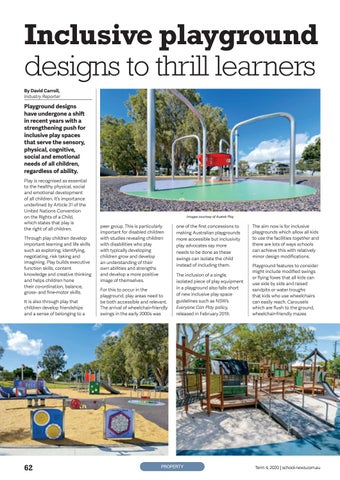Inclusive playground designs to thrill learners By David Carroll, Industry Reporter
Playground designs have undergone a shift in recent years with a strengthening push for inclusive play spaces that serve the sensory, physical, cognitive, social and emotional needs of all children, regardless of ability. Play is recognised as essential to the healthy physical, social and emotional development of all children. It’s importance underlined by Article 31 of the United Nations Convention on the Rights of a Child, which states that play is the right of all children. Through play children develop important learning and life skills such as exploring, identifying, negotiating, risk taking and imagining. Play builds executive function skills, content knowledge and creative thinking and helps children hone their co-ordination, balance, gross- and fine-motor skills. It is also through play that children develop friendships and a sense of belonging to a
62
Images courtesy of Austek Play
peer group. This is particularly important for disabled children with studies revealing children with disabilities who play with typically developing children grow and develop an understanding of their own abilities and strengths and develop a more positive image of themselves. For this to occur in the playground, play areas need to be both accessible and relevant. The arrival of wheelchair-friendly swings in the early 2000s was
one of the first concessions to making Australian playgrounds more accessible but inclusivity play advocates say more needs to be done as these swings can isolate the child instead of including them. The inclusion of a single, isolated piece of play equipment in a playground also falls short of new inclusive play space guidelines such as NSW’s Everyone Can Play policy, released in February 2019.
PROPERTY
The aim now is for inclusive playgrounds which allow all kids to use the facilities together and there are lots of ways schools can achieve this with relatively minor design modifications. Playground features to consider might include modified swings or flying foxes that all kids can use side by side and raised sandpits or water troughs that kids who use wheelchairs can easily reach. Carousels which are flush to the ground, wheelchair-friendly mazes
Term 4, 2020 | school-news.com.au
